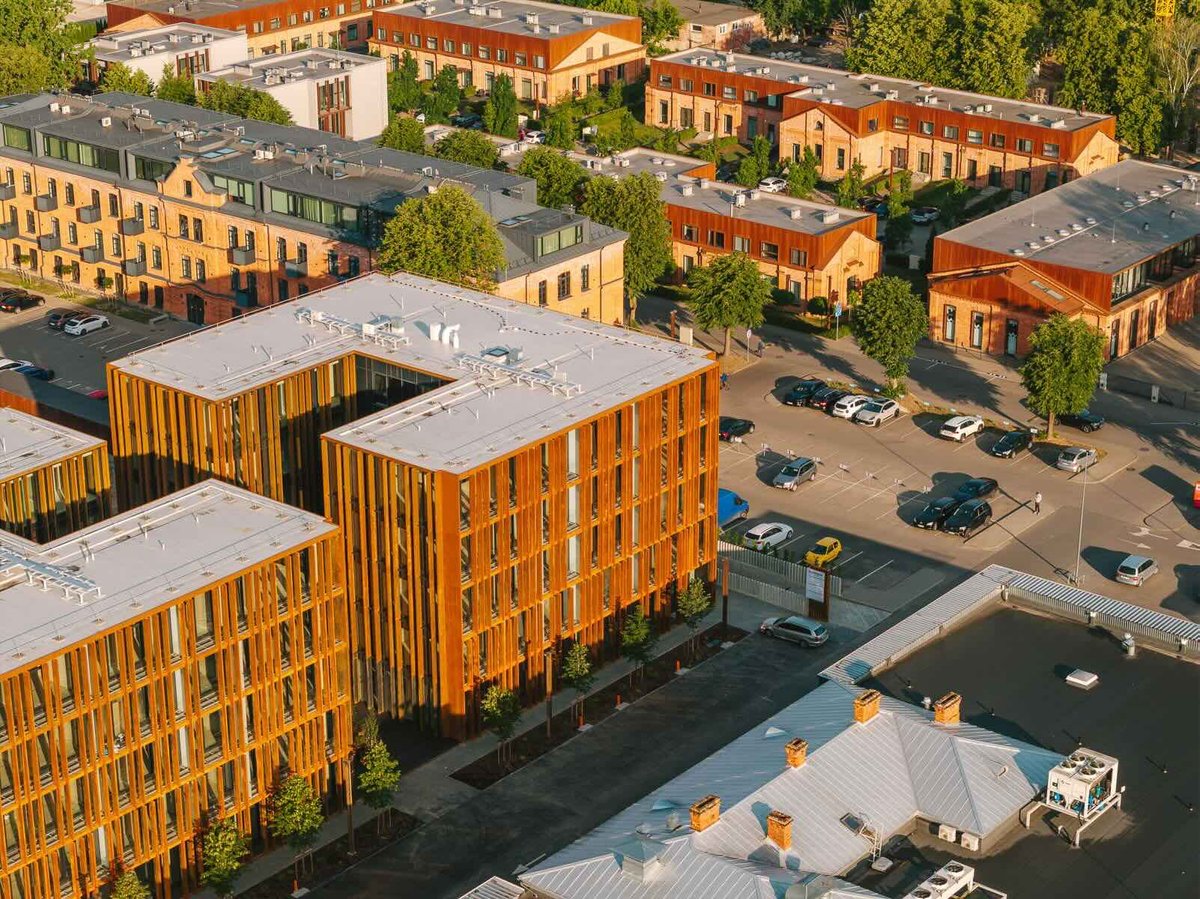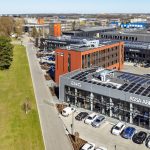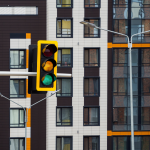2024 new-build apartment market: more sold, less built

In 2024, the market for new-build apartments in major cities reached a turning point, when sales growth started to pick up again after a two-year slump in the primary and secondary apartment market. According to Ober-Haus data, compared to 2023, in 2024 there will be 43% more apartments sold in the primary market in Vilnius, 40% more in Kaunas and 44% more in Klaipėda. The year-on-year decline in mortgage interest rates, stabilisation of sales prices and various sales promotion strategies of developers have brought back at least some of the delayed buyers to the new-build housing market.
“On the one hand, we are seeing an increase in housing market activity, while on the other hand, the volume of apartments being developed for sale in some major cities has fallen to historic lows,” says Raimondas Reginis, head of market research for the Baltics at Ober-Haus. The biggest drop in development was recorded in the country’s capital, where even fewer apartments were built during the year than forecast a year ago. According to Ober-Haus, in 2024 developers in Vilnius will build 2,589 apartments for sale, or 47% less than in 2023. “And this is the lowest rate in the last 10 years. The drastic drop in buyer activity on the primary market between 2022 and 2023 has forced most developers to halt their investments or slow down the pace of development. As the construction of apartment buildings usually takes about 1-2 years, we are therefore recording a historically very modest number of completions in 2024.
At the same time, the rental market in 2024 has seen a fairly solid addition of new housing from investors developing exclusively rental housing projects. During the year, four new rental projects (Liv_in Vilnius New Town, Eften Living Vilnius, B10, Hedonistas) were opened in the capital, bringing the total number of rental units on the market to more than 380, bringing the total number of rental and professionally managed units in Vilnius to almost 2,500.
“The highest volumes of such housing development in the capital of the country were recorded in 2022-2023. Despite the slowdown in the real estate market as a whole over the last few years, the rental segment in the country’s major cities remains very active. The growing population in the country’s major cities and the still low level of housing affordability encourage both large and small investors to invest in the rental segment,” says R. Reginis.
In 2024, two thirds of apartments will be built in four districts of Vilnius
The developers have built new flats in 12 wards of Vilnius city over 2024. The four wards with the most developers’ attention were the four wards where two thirds of all apartments were built: Žirmūnai sen. (25.6%), Pilaitė sen. (18.6%), Naujamiestis sen. (14.0%) and Pašilaičiai sen. (8.8%).
“In recent years, quite active development of multi-flats has been taking place in the northern part of Žirmūnai, on the site of the former Kuro Apparatus factory, and in the surrounding areas. The attractive location of this area in the city and its high development potential have encouraged investments in this area of the city, which will obviously continue to expand in the future. The relocation of the current Verkiai bus park and the planned upgrading of 9 hectares of the site for public use should be a particular boost,” says Mr Reginis.
As in 2023, in 2024 the Senamiesčio district was characterised by a very modest volume of completed multi-family projects (2.0% of the total number of flats constructed in the year).In 2024, the construction of the last stages of the Paupis district was actually completed, which completed the development of one of the largest conversion projects in the capital in the Paupis district. A total of around 900 apartments and various commercial facilities have been built in this quarter, with an investment of EUR 200 million. Reginis points out that the Old Town has limited opportunities for new development and that more expensive projects take much longer to complete than typical projects in other parts of the city. “However, more than ten projects of various sizes are planned to be completed in this district between 2025 and 2026, which will significantly add more expensive housing to the market”, he says.
The average size of apartments in the capital remained below 50 sqm
In 2023, for the first time, the average floor area of flats built for sale in multi-apartment buildings did not exceed 50 sqm (49.9 sqm). According to Ober-Haus data, in 2024, the average area of an apartment in multifamily flats built in Vilnius decreased even further and amounted to 49.5 sq m. According to Reginis, the record low average area could be caused by the very limited number of higher class projects completed in 2024. “Such projects usually design much more spacious apartments for buyers, and the average area of apartments in an apartment block can reach even 80-100 sqm. However, in 2024, the majority of the apartment blocks built were in the economy and middle class, which, however, were dominated by smaller apartments. For example, in the capital city, at least four apartment blocks were built with an average apartment area of less than 40 sqm,” the analyst says.
Taking into account that in 2025-2026 more high-end projects will be implemented in the capital, and it is already irrational to design even more flats with smaller floor area in apartment blocks (due to the higher density of the population, the level of comfort of living will deteriorate, and the overall attractiveness of the project will be reduced at the same time), it is highly probable that the average floor area will not decline any further, and will return to the level of the period of 2018-2022 (50-53 sq.m.) at least.
Half of the apartments in the capital are built in A++ energy class apartment buildings
The data collected by Ober-Haus show that out of the apartments built for sale in the capital of the country in 2024, apartments in A++ energy class apartment buildings will account for 49.9% (24.1% in 2023). “Although the requirement to comply with the requirements of the A++ energy efficiency class has come into force for newly constructed buildings as of 1 January 2021 (when the building permit is applied for), we can see that no more than half of such apartment blocks will be built in Vilnius in 2024,” points out Reginis.
In 2024, 22.4% of apartments in A+ energy class apartment buildings (55.3% in 2023), and 21.2% of apartments in A-class buildings (12.2% in 2023). The remaining share of apartments (6.5%) was in B or lower energy class apartment blocks (8.4% in 2023). “There are still some new or reconstructed apartment blocks for sale on the market, which are also issued with B energy performance certificates. These are mostly projects developed under previously issued building permits, as developers do not want to waste time on the coordination of new project solutions and permitting procedures,” explains the Ober-Haus representative.
Predictions have been confirmed – 45% less built in Kaunas
The forecasts made a year ago about the decline in the volume of apartment building in Kaunas in 2024 have been fully confirmed. According to Ober-Haus data, in 2024 developers in Kaunas will build 834 apartments for sale, or 45% less than in 2023, which was a year of record-breaking construction volumes.
“Just like in the capital city, developers in Kaunas have reacted to the reduced demand for housing and significantly reduced the pace of development. This is especially visible when compared to the record year of 2023, when as many as 1,500 apartments were built for sale in Kaunas. And historically speaking, in 2024, the volume of construction of apartments for sale returned to the level of 2019-2020,” says Reginis. In total, in 2024, buyers could build in 27 different projects (counting the continuous phases of projects).
In 2024, developers built apartment blocks in various locations in and around the city, but the Šančiai sub-district stood out the most, with 22% of the total number of apartments built. For example, two new apartment blocks (over 80 flats) were built on the area of the former military barracks near A. Juozapavičiaus Ave., completing the conversion of this area. Over the years, new buildings and old buildings have been built and reconstructed in this area, housing the city’s residents and various businesses. There has also been quite a lot of construction activity in other districts of the city, such as Dainava, Vilijampolė, Šilainiai and Žaliakalnis.
Klaipėda’s development rates increase in 2024
According to Ober-Haus data, in 2024 developers in Klaipėda will build 478 apartments for sale or 19% more than in 2023. Unlike Vilnius and Kaunas, Klaipėda is experiencing an increase in construction volumes, but the city’s multifamily development remains relatively modest but stable. However, in 2024, the number of apartments built in the port city was the highest since 2009.
Klaipėda is typically home to smaller and medium-sized developments, giving buyers a choice of different projects. For example, in 2024, buyers in Klaipėda could build in 13 different projects (including continuous phases).
“It is encouraging that buyers have a wider choice of housing in the central part of the city or in the Old Town area. In addition to smaller projects in this part of the city, larger and higher class projects are finally being implemented,” says R. Reginis. In 2024, the construction of the first two blocks of flats (about 90 apartments) in the Bastionų namai project near the Danube River was completed, and the construction of the other phases is continuing. Also in 2025, construction of the first phase of Memel City should be completed, with around 100 apartments and a business centre to be built at the junction of the River Danube and the Curonian Lagoon.
Recent demographic trends in Klaipėda are also quite positive. According to the State Data Agency, the number of permanent residents in Klaipėda City Municipality has been growing for the fourth year in a row, and over the last five years the population of the port city has increased by 5.7%, or slightly more than 8,700 residents. Meanwhile, the growth rate of Klaipėda District remains noticeably faster – the population grew by 26.0% or almost 14,300 inhabitants over the same period.
Development trends in major cities in 2025 are different
Despite the recovery of the housing market that started to be recorded in the second half of 2024, developers in the country’s major cities have not yet started construction of new projects on a larger scale during the year. For smaller developers, the biggest challenge was and still is the very limited availability of financing, while larger developers have started to implement those projects for which building permits have been obtained.
A survey of the country’s major developers prepared by the LNTPA at the beginning of 2025 (the Real Estate Market Expectations Index) showed that the prospects for the housing sector are currently viewed as very good. In 2025, developers are willing to increase the volume of development, but bureaucratic disturbances, unfavourable legal framework, and smooth implementation of new regulations are identified as the biggest obstacles to development.
According to Reginis, despite the change in market sentiment for the better, the volume of completed apartments in 2025 will not be abundant, and the trends in major cities are different. Taking into account the currently under construction apartment blocks and their construction progress, Ober-Haus estimates that in 2025, a total of about 3,300 apartments will be built for sale in Vilnius, or 27% more than in 2024. Meanwhile, in Kaunas, a further decline in construction volumes is forecast, where around 680 apartments are expected to be built in 2025 (18% less than in 2024). In Klaipėda, meanwhile, construction volumes are expected to maintain their normal pace in 2025, with around 400 apartments to be built for sale (16% less than in 2024).
After a very unbalanced housing market period from 2021 to 2023, in 2024 the country’s major cities have finally maintained a healthy balance between the number of apartments built and the number of apartments sold. According to Ober-Haus estimates, in Vilnius, Kaunas and Klaipėda the total number of apartments built was 3,900, while the number of apartments sold on the primary market was around 4,400.
“The relatively fast growth of sales volumes on the primary market shows that buyers are returning to the market of new-build apartments and are much more confident in their decision to buy a home. At the same time, the actual construction volumes are still at a low level and if the demand for housing remains as active this year as it was at the end of 2024 or the beginning of 2025, a shortage of housing may be felt in the second half of 2025,” R. Reginis believes.
The Kaunas market may face greater challenges, as the rate of development of apartments here has been declining for two years in a row (taking into account the 2025 forecasts). The Vilnius market, which has the highest market recovery potential (in nominal terms), and the actual construction volumes in 2025 will remain at a relatively low level (3,300 apartments). Based on the current sales rate, it is likely that around 4,400 new apartments will be sold on the Vilnius primary market in 2025, which means that statistically there will be a shortage of around 1,100 apartments. “Looking at the rebalanced market in 2021-2023, such a shortage is not yet critical, but it does signal an unfavourable trend for the market. And especially for home buyers. It is therefore important that developers are prepared to respond to a faster market recovery. This means starting to build more projects in 2025, so that at least there is no housing shortage in 2026 or 2027,” says R. Reginis.
Latest news
 All news
All news

“e-market city” completes its second phase – the development of a modern “stock office” type shopping town continues
"e-market city", an online and wholesale shopping town located in a business-friendly location at the intersection of Eišiškių pl. and Geologų Street, is rapidly approaching the end of its second phase. The final construction works are currently underway and the first tenants of the new phase are preparing to move in as early as June-July. "The predominant floor areas of e-market city - ranging from 370 to 960 m² - are easily combinable and adaptable to a wide range of commercial activities. Existing and potential tenants appreciate the easy accessibility, high quality of construction and fitting-out, functional layout and solid neighbourhood, where well-known companies such as Assa Abloy, Dextera, Skuba, Skuba, Maidina, Šildymas plius, YE International, etc. are already located. The first phase is already 100% leased, while the second phase is still available - we invite you to get in touch", says Remigijus Valickas, Commercial Real Estate Projects Manager at Ober-Haus. The project is being developed in three phases on an area of 3.9 ha. The total area of the buildings will exceed 20,000 m² and the total investment in the project will amount to more than EUR 25 million. For more information about the project and leasing opportunities,…

The recovery of a very strong-looking housing market may slow down
The Ober-Haus Lithuanian apartment price index (OHBI), which follows changes in apartment sale prices in the five biggest Lithuanian cities (Vilnius, Kaunas, Klaipėda, Šiauliai and Panevėžys) increased by 0.5% in March 2025. The annual apartment price growth in the biggest cities of Lithuania was 4.3% (a 4.1% increase was recorded in February 2025). In March 2025 apartment prices in Vilnius, Kaunas, Šiauliai and Panevėžys increased by 0.4%, 1.3%, 0.4% and 0.2%, respectively, with the average price per square meter reaching EUR 2,680 (+10 EUR/sqm), EUR 1,846 (+24 EUR/sqm), EUR 1,172 (+4 EUR/sqm) and EUR 1,149 (+2 EUR/sqm). In the same month, apartment prices in Klaipėda decreased by 0.1% and the average price per square meter dropped to EUR 1,752 (-2 Eur/sqm). In the past 12 months, the prices of apartments increased in all the biggest cities in the country: 3.3% in Vilnius, 5.6% in Kaunas, 5.4% in Klaipėda, 6.5% in Šiauliai and 6.4% in Panevėžys. "At the beginning of 2025, the country's housing market is showing impressive results. After a very strong growth in housing transactions in January and February this year, the increase in the number of transactions continued in March. According to the data of the State Enterprise…

Housing market has woken up, but no faster price growth yet
The Ober-Haus Lithuanian apartment price index (OHBI), which follows changes in apartment sale prices in the five biggest Lithuanian cities (Vilnius, Kaunas, Klaipėda, Šiauliai and Panevėžys) increased by 0.4% in February 2025. The annual apartment price growth in the biggest cities of Lithuania was 4.1% (a 4.0% increase was recorded in January 2025). In February 2025 apartment prices in Vilnius, Kaunas, Klaipėda, Šiauliai and Panevėžys increased by 0.3%, 0.1%, 0.8%, 0.8% and 0.9%, respectively, with the average price per square meter reaching EUR 2,670 (+7 EUR/sqm), EUR 1,822 (+2 EUR/sqm), EUR 1,754 (+13 EUR/sqm), EUR 1,168 (+10 EUR/sqm) and EUR 1,147 (+10 EUR/sqm). In the past 12 months, the prices of apartments increased in all the biggest cities in the country: 3.2% in Vilnius, 4.1% in Kaunas, 6.2% in Klaipėda, 6.6% in Šiauliai and 6.7% in Panevėžys. ‘As predicted, a rapid annual growth in the number of housing transactions is recorded at the beginning of 2025. According to the data of the State Enterprise Centre of Registers, 40% more apartments were purchased in the country in January this year and 39% more in February this year than in the same month in 2024. It should be noted that in the…
 All news
All news


